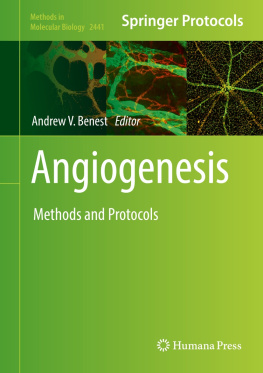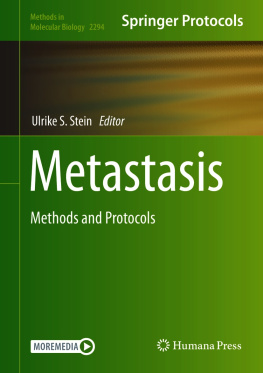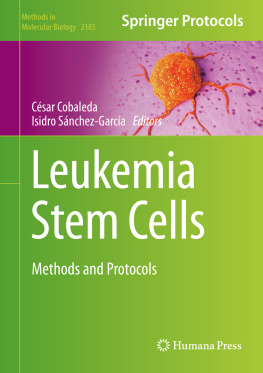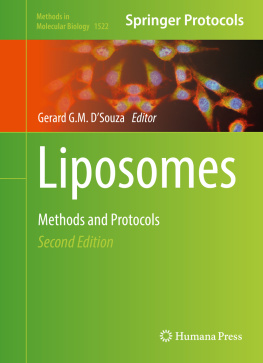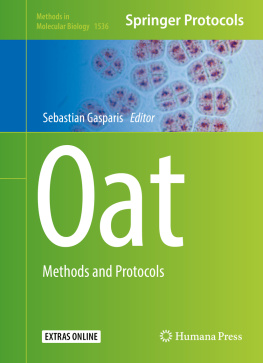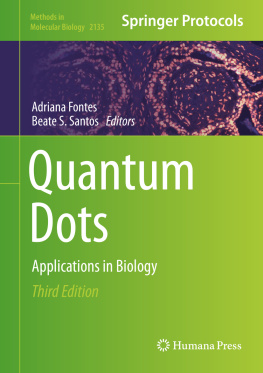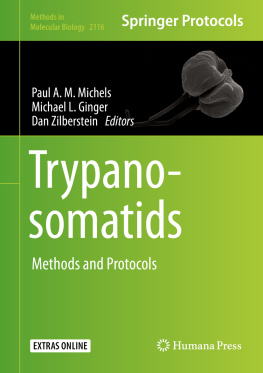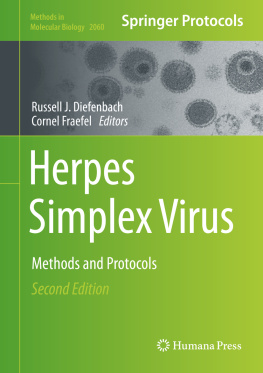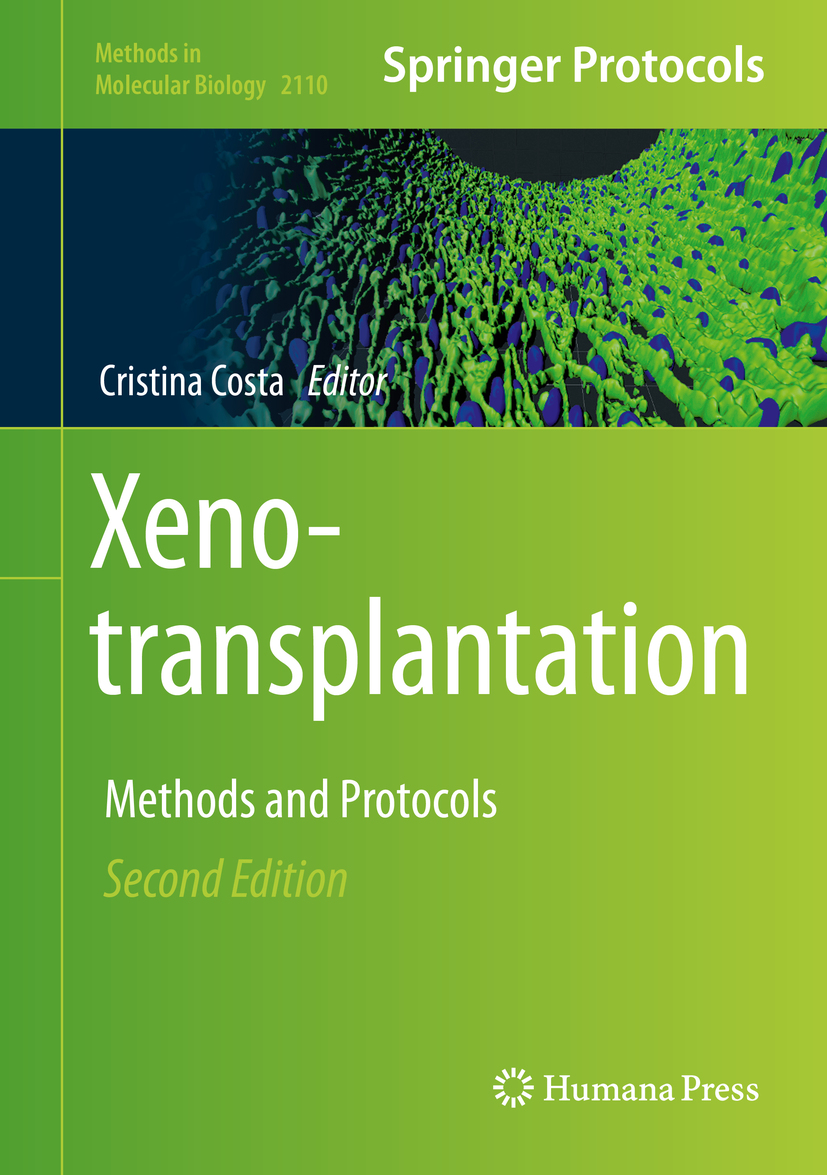Volume 2110
Methods in Molecular Biology
Series Editor
John M. Walker
School of Life and Medical Sciences, University of Hertfordshire, Hatfield, Hertfordshire, UK
For further volumes: http://www.springer.com/series/7651
For over 35 years, biological scientists have come to rely on the research protocols and methodologies in the critically acclaimedMethods in Molecular Biologyseries. The series was the first to introduce the step-by-step protocols approach that has become the standard in all biomedical protocol publishing. Each protocol is provided in readily-reproducible step-by-step fashion, opening with an introductory overview, a list of the materials and reagents needed to complete the experiment, and followed by a detailed procedure that is supported with a helpful notes section offering tips and tricks of the trade as well as troubleshooting advice. These hallmark features were introduced by series editor Dr. John Walker and constitute the key ingredient in each and every volume of theMethods in Molecular Biologyseries. Tested and trusted, comprehensive and reliable, all protocols from the series are indexed in PubMed.
Xenotransplantation
Methods and Protocols
2nd ed. 2020
Editor
Cristina Costa
Institut dInvestigaci Biomdica de Bellvitge (IDIBELL), Hospital Duran i Reynals, LHospitalet de LLobregat, Barcelona, Spain
ISSN 1064-3745 e-ISSN 1940-6029
Methods in Molecular Biology
ISBN 978-1-0716-0254-6 e-ISBN 978-1-0716-0255-3
https://doi.org/10.1007/978-1-0716-0255-3
Springer Science+Business Media, LLC, part of Springer Nature 2020
This work is subject to copyright. All rights are reserved by the Publisher, whether the whole or part of the material is concerned, specifically the rights of translation, reprinting, reuse of illustrations, recitation, broadcasting, reproduction on microfilms or in any other physical way, and transmission or information storage and retrieval, electronic adaptation, computer software, or by similar or dissimilar methodology now known or hereafter developed.
The use of general descriptive names, registered names, trademarks, service marks, etc. in this publication does not imply, even in the absence of a specific statement, that such names are exempt from the relevant protective laws and regulations and therefore free for general use.
The publisher, the authors, and the editors are safe to assume that the advice and information in this book are believed to be true and accurate at the date of publication. Neither the publisher nor the authors or the editors give a warranty, expressed or implied, with respect to the material contained herein or for any errors or omissions that may have been made. The publisher remains neutral with regard to jurisdictional claims in published maps and institutional affiliations.
This Humana imprint is published by the registered company Springer Science+Business Media, LLC, part of Springer Nature.
The registered company address is: 1 New York Plaza, New York, NY 10004, U.S.A.
Preface
Many major advances have been made in the last decade in the xenotransplantation field, many of them associated with technological progress. Progress continues thanks to the great benefit that xenotransplantation can provide to human health and the conviction of our community of the feasibility of success in multiple clinical applications. The long waiting lists for allogeneic cells, tissues, and organs and the impossibility of the current system to meet the demand clearly justify research in xenotransplantation. This new book focuses on describing technology that is now available to the field for both generating basic knowledge and setting the bases for the improvement and development of clinical applications based on xenotransplantation. It comprises some updated chapters of our previous book (Methods in Molecular Biology 885, 2012), as well as many new chapters describing complementary technology of high relevance to current research.
The complexity of the xenotransplantation field requires specialization of scientists and experts in a variety of aspects that need to be simultaneously studied and addressed to develop a successful clinical application. All potential xenogeneic therapies benefit from the basic work done to characterize the xenogeneic interactions at the cellular and molecular levels. The major contribution of innate immunity to xenograft rejection is well known thanks to multiple studies that have opened new ground to reveal the relevance of cells and molecules of the innate immune system in transplant rejection. Thus, not only proteins but also carbohydrates and possibly free radicals play critical roles in triggering the xenogeneic immune responses. Good tools and protocols are certainly needed for their study. Interestingly, an additional level of complexity is attained using 3D cell culture models that provide highly valuable information of cellular and physiological processes under multiple experimental conditions that mimic the in vivo setting. Importantly, efficient technologies are being developed to engineer the xenogeneic cells, organs, and source animals, particularly at the germ-line level, that should allow the modification of xenografts in order to prevent rejection and facilitate function. The attractive new tools for genome editing based on CRISPR/Cas9 technology are especially suited for this purpose. Lastly, a great amount of preclinical work is required to test the new developments in relevant in vivo models comprising both small animal models and major work in non-human primates such as baboon.
Recent progresses in xenotransplantation have renewed and attracted new interest as the expectations for therapeutic application are increasing for both solid organs and cellular xenografts. The substantial improvements in xenograft survival in the various preclinical studies, especially for solid organ xenotransplantation such as orthotopic heart and kidney, have been thoroughly reviewed in the introduction and pave the way for its clinical application. Each cell type, tissue, and organ of interest for xenotransplantation has its particularities. Thus, teams usually specialize and acquire a profound understanding of each system and the associated technology to help them progress efficiently. In this regard, the book includes an updated description of xenotransplantation models of pig kidney and lung in primate models, as well as a new chapter dedicated to liver xenotransplantation, all presented by experts in each subject. The detailed description of the currently used heart xenotransplantation models can still be found in our first book (Methods in Molecular Biology 885, 2012). Interestingly, a novel tolerogenic approach (based on intra-bone bone marrow transplantation) which could be applied to the different transplantation settings is also included.
The development of new therapies based on the use of scaffolds, cells, and engineered tissue of animal origin is certainly object of intense study. Acellular scaffolds and chemically treated tissues such as bioprosthetic heart valves (mainly of porcine and bovine origin) are broadly used in clinical practice. Xenogeneic cells and avascular tissues are simpler than solid organs and seem to pose less hurdles to attain long-term graft survival. Specific chapters are thus included that describe protocols of cell and tissue preparation and transplantation in relevant animal models. In this accordance, recent accomplishments at the level of clinical trials in xenotransplantation of pancreatic islets and anterior lamellar corneal grafts further encourage to continue with these efforts and lead us to believe that xenotransplantation will be for long an object of interest and research.


